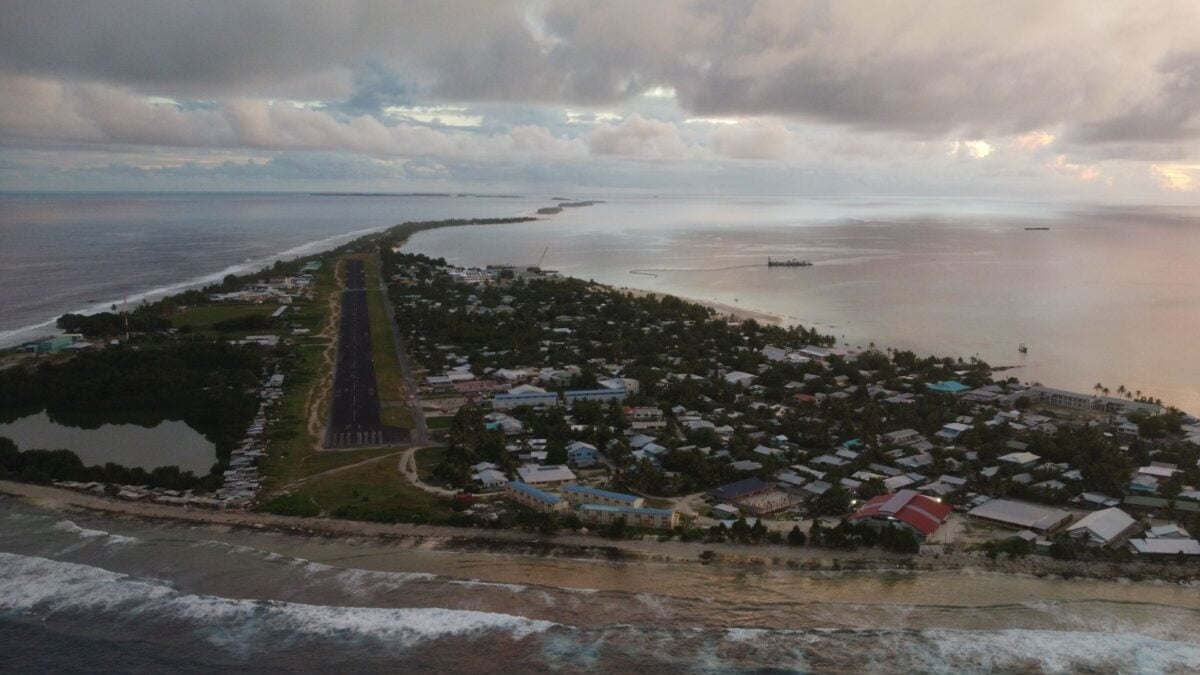As sea levels continue to rise, threatening low-lying island nations globally, many inhabitants are faced with the grim reality of leaving their homes. In Tuvalu, one of the most climate-impacted archipelagos in the world, the migration has already begun.
Almost one-third of Tuvalu’s approximately 11,000 residents are applying for Australian visas to escape the looming threat of inundation. In 2023, Australia announced a special visa program as part of a bilateral treaty with Tuvalu, marking the world’s first initiative to offer visas specifically in response to climate change. Australia plans to issue 280 visas annually, with the first group made available on June 16. Over 3,000 Tuvaluans have submitted applications.
Those selected through a lottery expected to conclude by the end of July will likely start arriving in Australia by year’s end, as reported by New Scientist. Visa holders will gain immediate access to various benefits, including education, Medicare, the National Disability Insurance Scheme (NDIS), family tax benefits, childcare subsidies, and youth allowances.
“Australia recognises the devastating impact climate change is having on the livelihoods, security and wellbeing of climate vulnerable countries and people, particularly in the Pacific region,” said a representative from Australia’s foreign affairs department to The Guardian.
Located in the west-central Pacific Ocean, Tuvalu has an average elevation of less than 10 feet (3 meters). The World Bank indicates that many of its islands could become uninhabitable by the century’s end due to flooding, saltwater intrusion, storm surges, and erosion. NASA researchers anticipate that islands like Tuvalu will see at least 6 inches (15 centimeters) of sea level rise in the next 30 years alone.
“I am living the reality of climate change,” stated Grace Malie, a Tuvalu citizen and youth delegate for the Rising Nations Initiative, in a 2024 interview with NASA. “Everyone [in Tuvalu] lives by the coast or along the coastline, so everyone gets heavily affected by this.”
Funafuti, the capital and largest atoll of Tuvalu, has already suffered a sea-level rise of roughly 5.5 inches (14 centimeters) over the past three decades, which is about 1.5 times the global average. This atoll houses 60% of the nation’s population, and forecasts suggest that by 2050, half of its area could be submerged due to daily tides.
The impact of rising sea levels is increasingly evident in Tuvalu, where the constant intrusion of saltwater has contaminated farmland and groundwater. As a result, residents now depend on rainwater collection systems and raised central gardens, leaving the nation more susceptible to droughts, water shortages, and disease outbreaks, according to UNICEF Australia.
To counteract sea level rise, Tuvalu has implemented several strategies, notably the Tuvalu Coastal Adaptation Project (TCAP), initiated in 2017. This project has seen some successes, including enhanced coastal hazard monitoring, land reclamation efforts, and coastal protections for outer islands. However, significant challenges remain.
In a bid to preserve its land and sovereignty as it faces the reality of potential submersion, Tuvalu is working on a digital project to create a virtual replica of the country. This initiative aims to “recreate [Tuvalu’s] land, archive its rich history and culture, and move all governmental functions into a digital space,” as outlined on its project website.
While Tuvalu may become the first country to vanish due to climate change, it is unlikely to be the last. Representing just 0.02% of global emissions, the Pacific Islands confront far greater climate threats than any other region. As more Tuvaluans are compelled to leave their homeland, other island nations will undoubtedly witness a similar fate in the future.

